
Megan Feheley
Sunrise
Installation with tarps and cord - 2021
About the Artist: Megan Feheley is a two spirit Ililiw (Cree) interdisciplinary artist and curator living and working out of Toronto, Ontario. They are currently working towards their BFA in Indigenous Visual Culture at OCAD University, and work predominately in sculpture/installation, beadwork, textiles, painting and video. Feheley’s art making is based in collaboration with community and land, with specific interests in knowledge transmission, resurgent material practices, environmental justice and decolonial approaches to art-making.
To engage with piece you view the images the artist has provided - begin with the ‘Question’, and then you can move to the ‘Answer’. You can scroll through the images with the arrows on the left and right-hand sides of the gallery.
An artist statement is also provided at the bottom of the page. To learn more about their work - take a look at their website and social media spaces!
Question


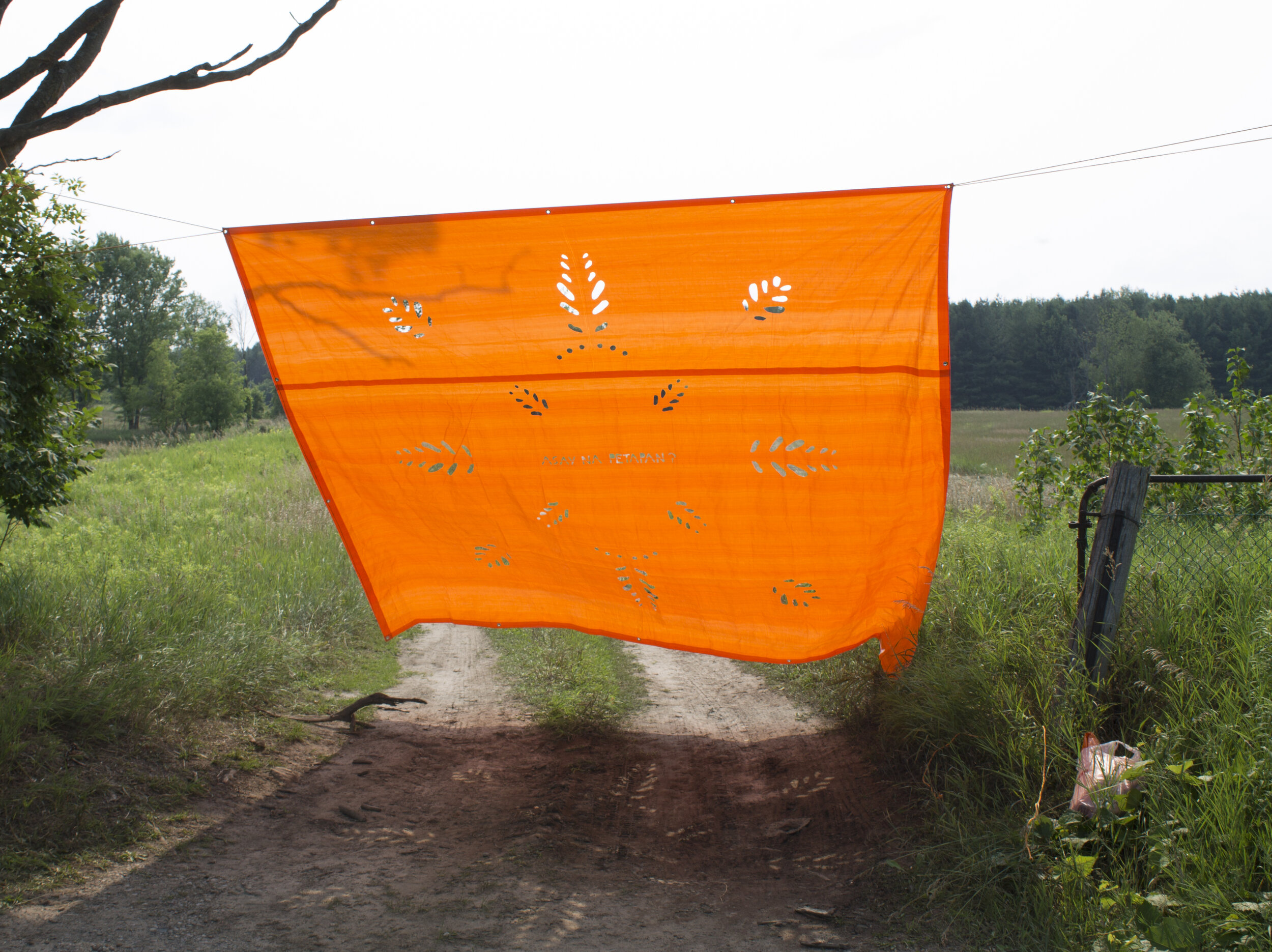


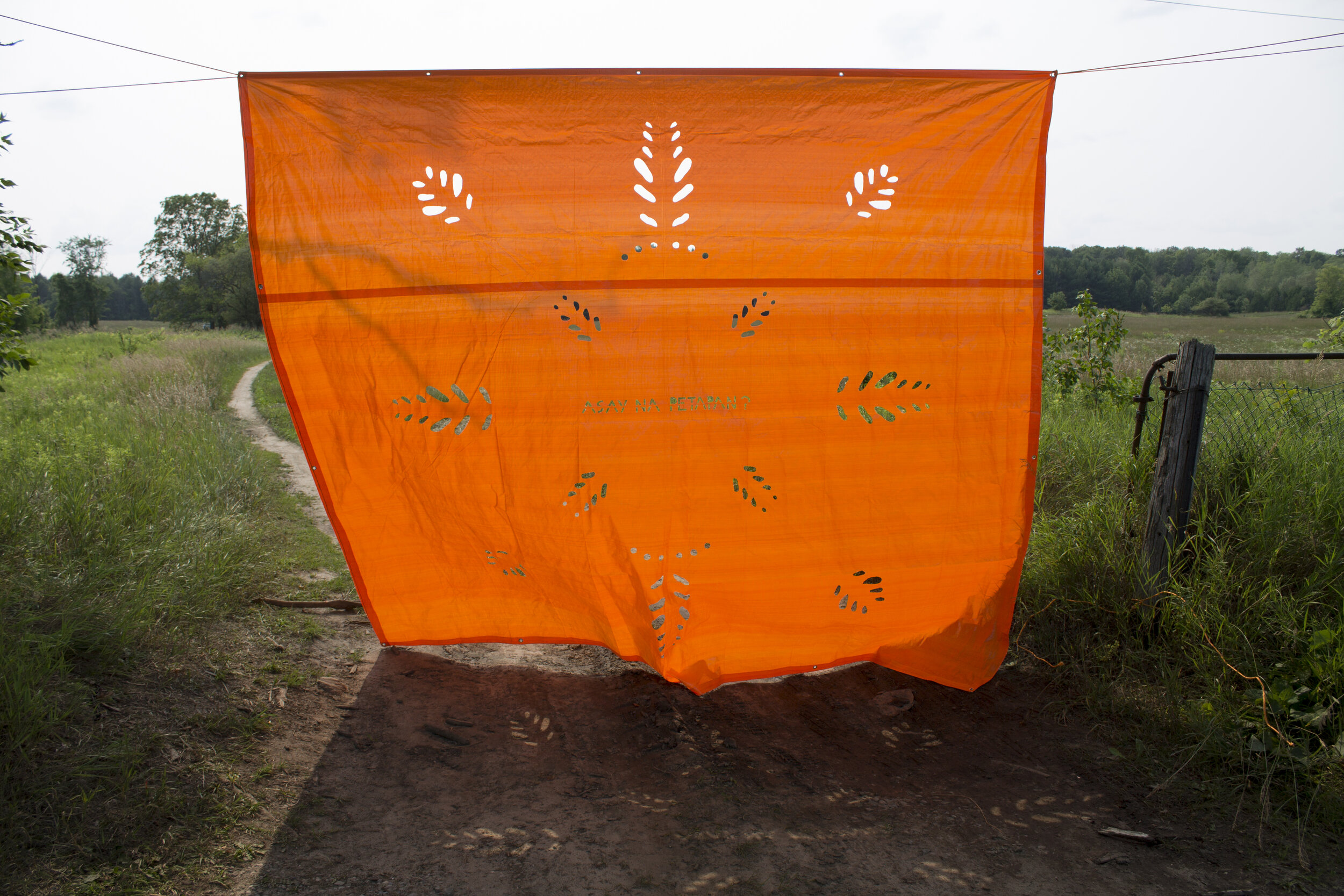

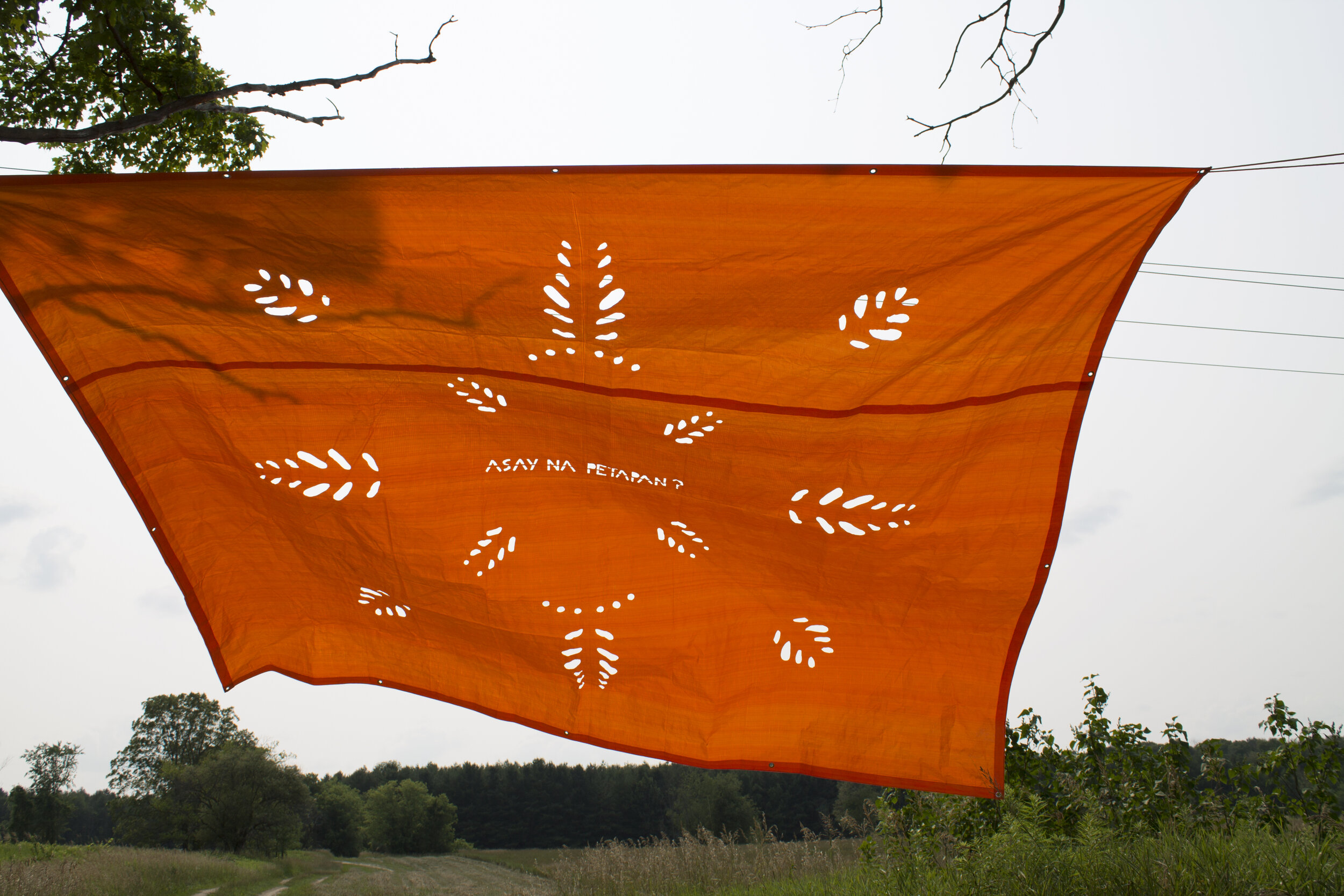


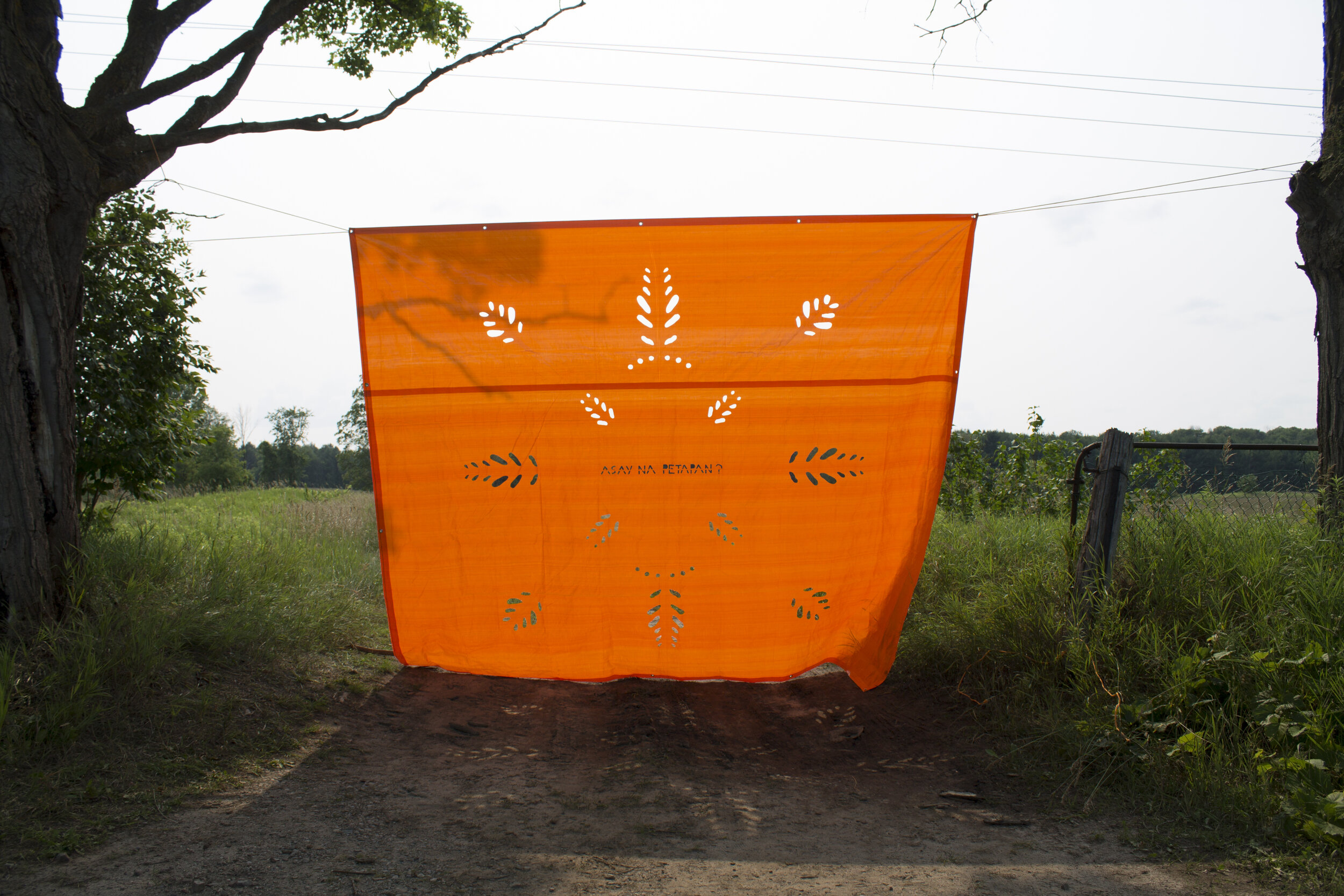
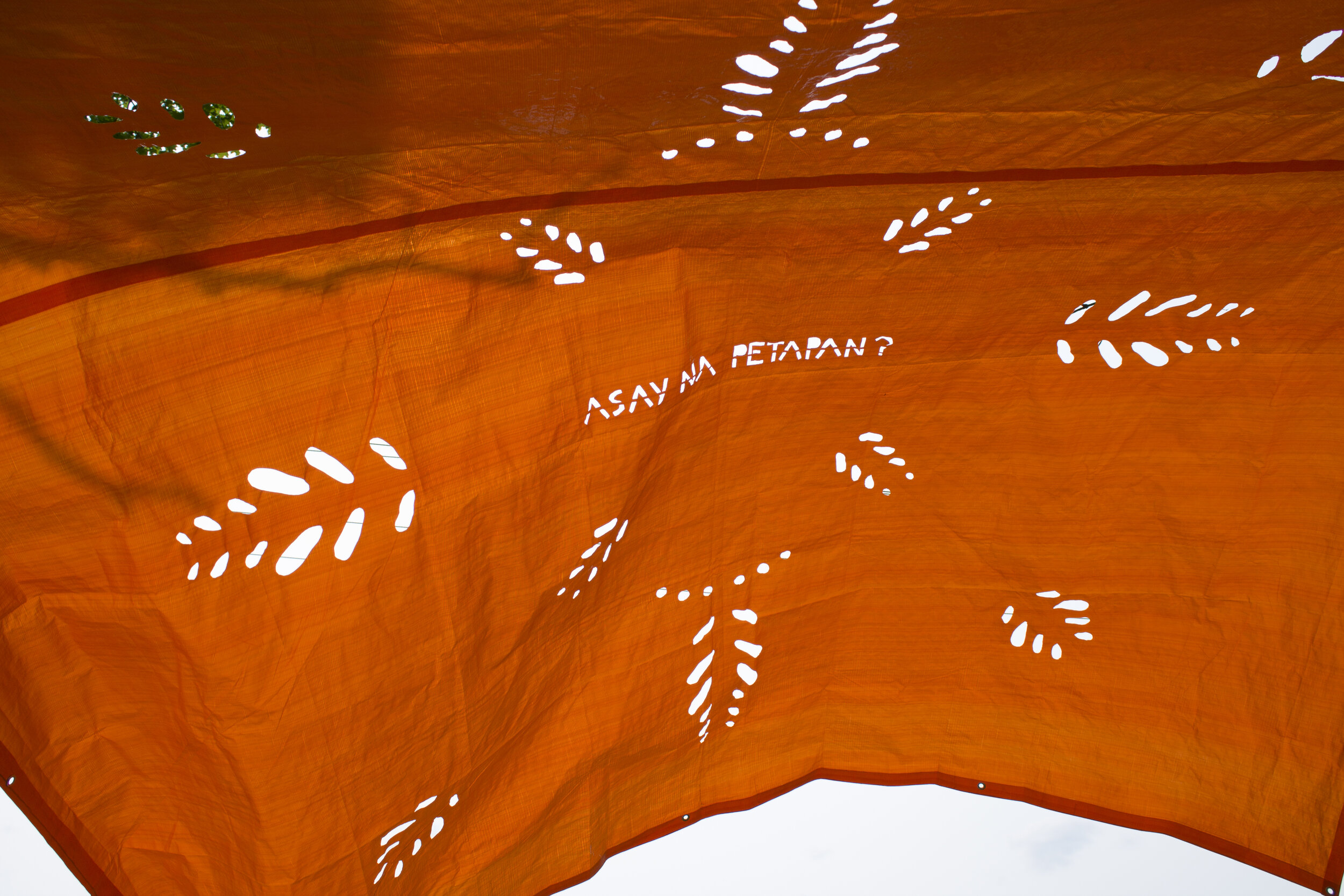


Answer



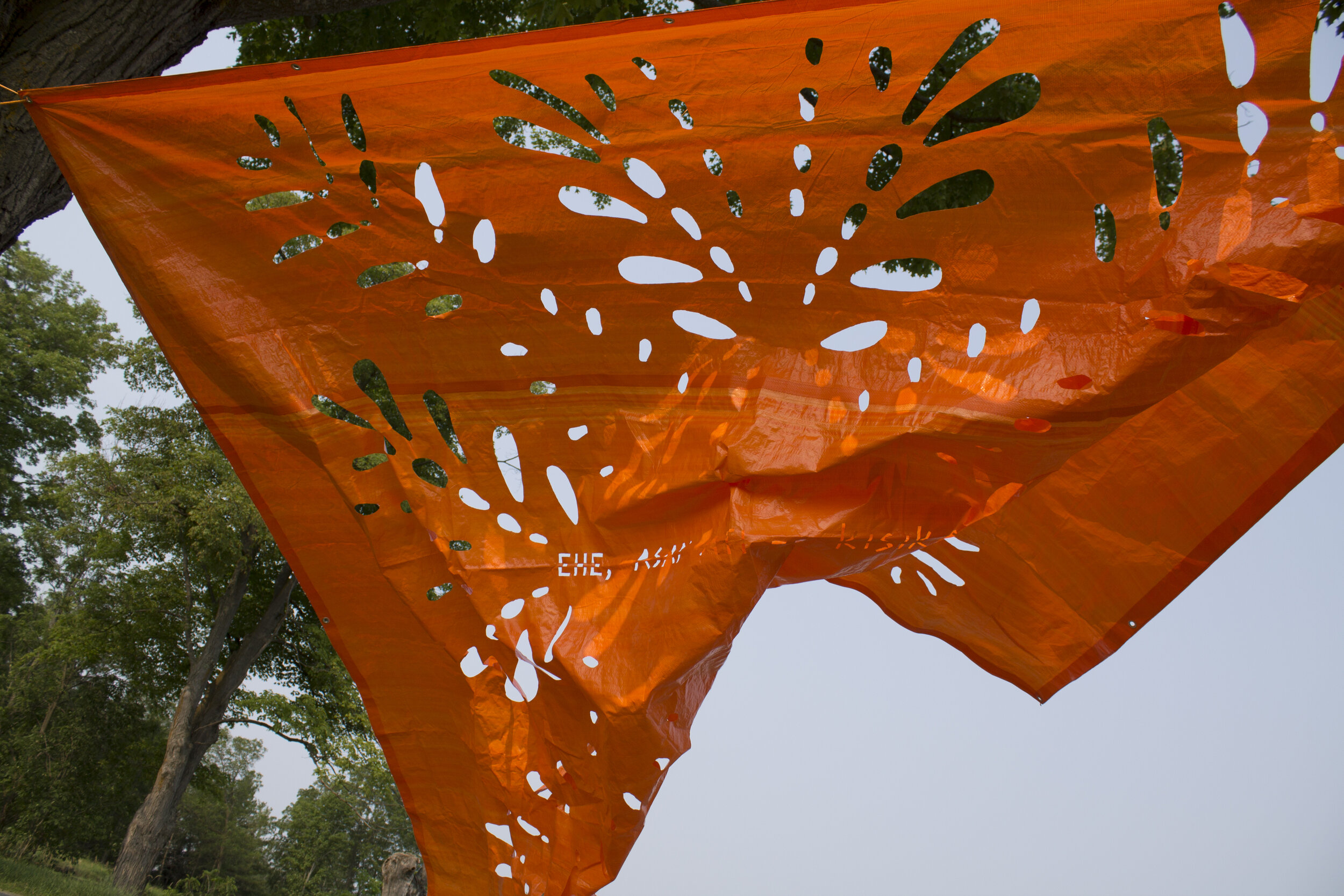
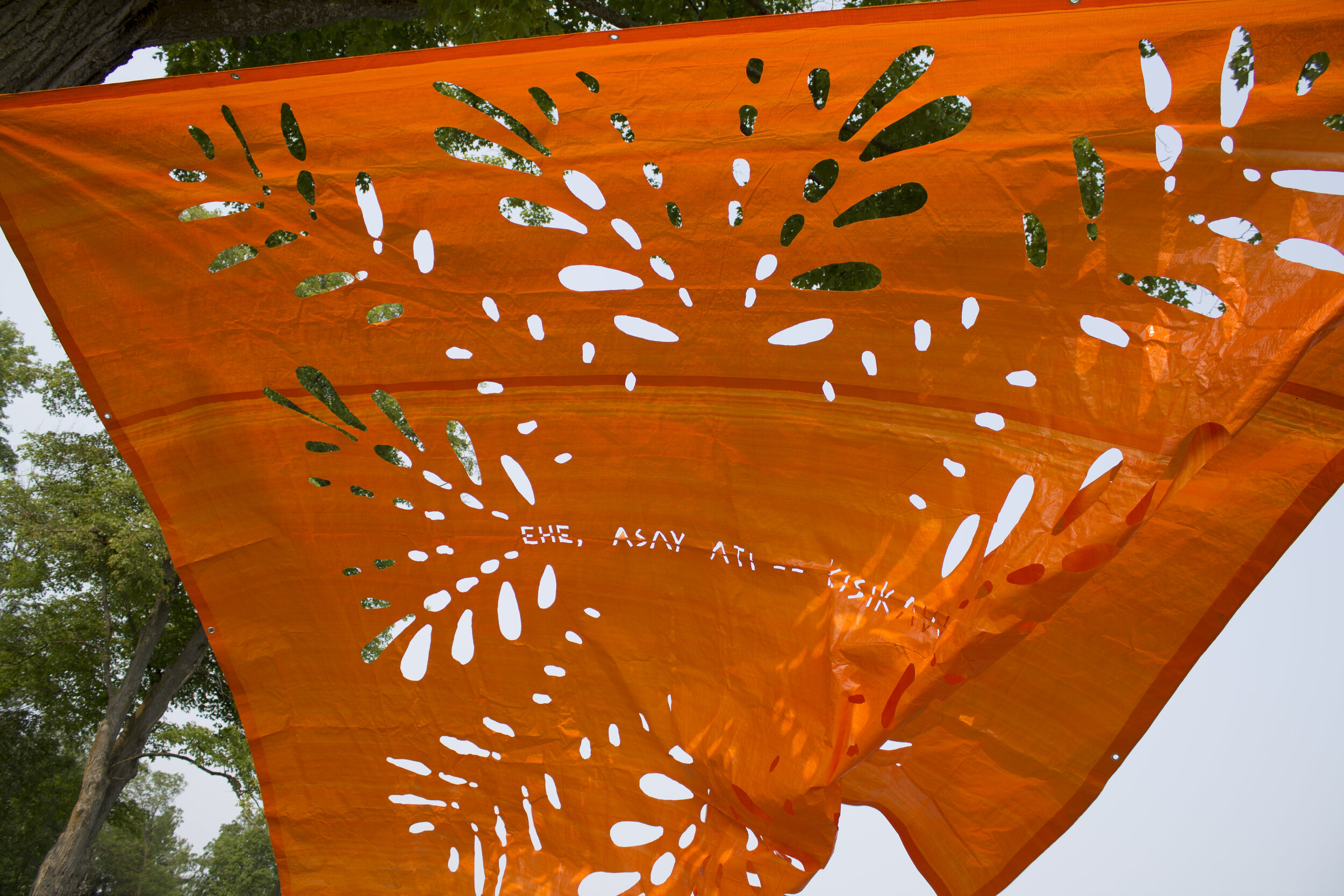
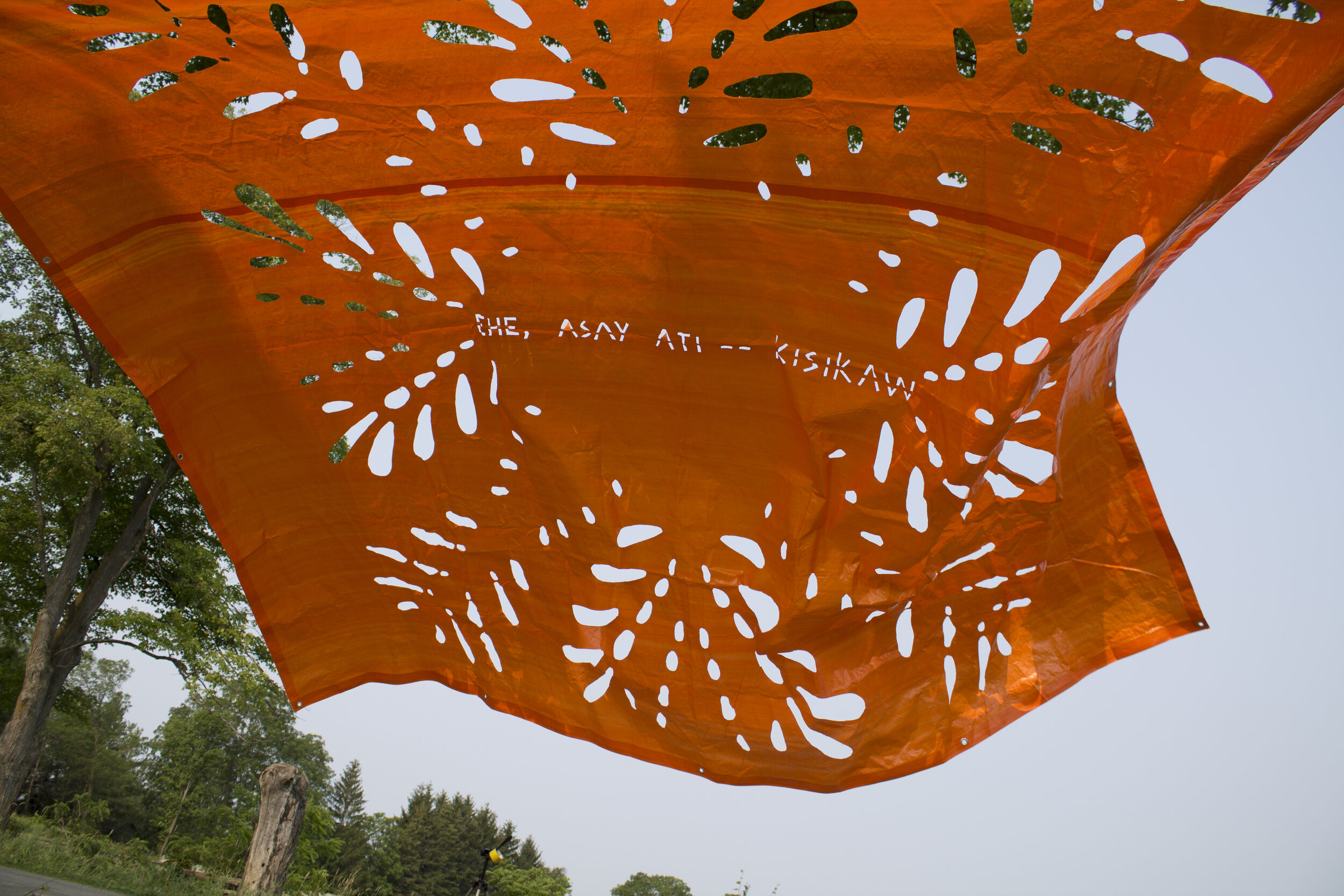

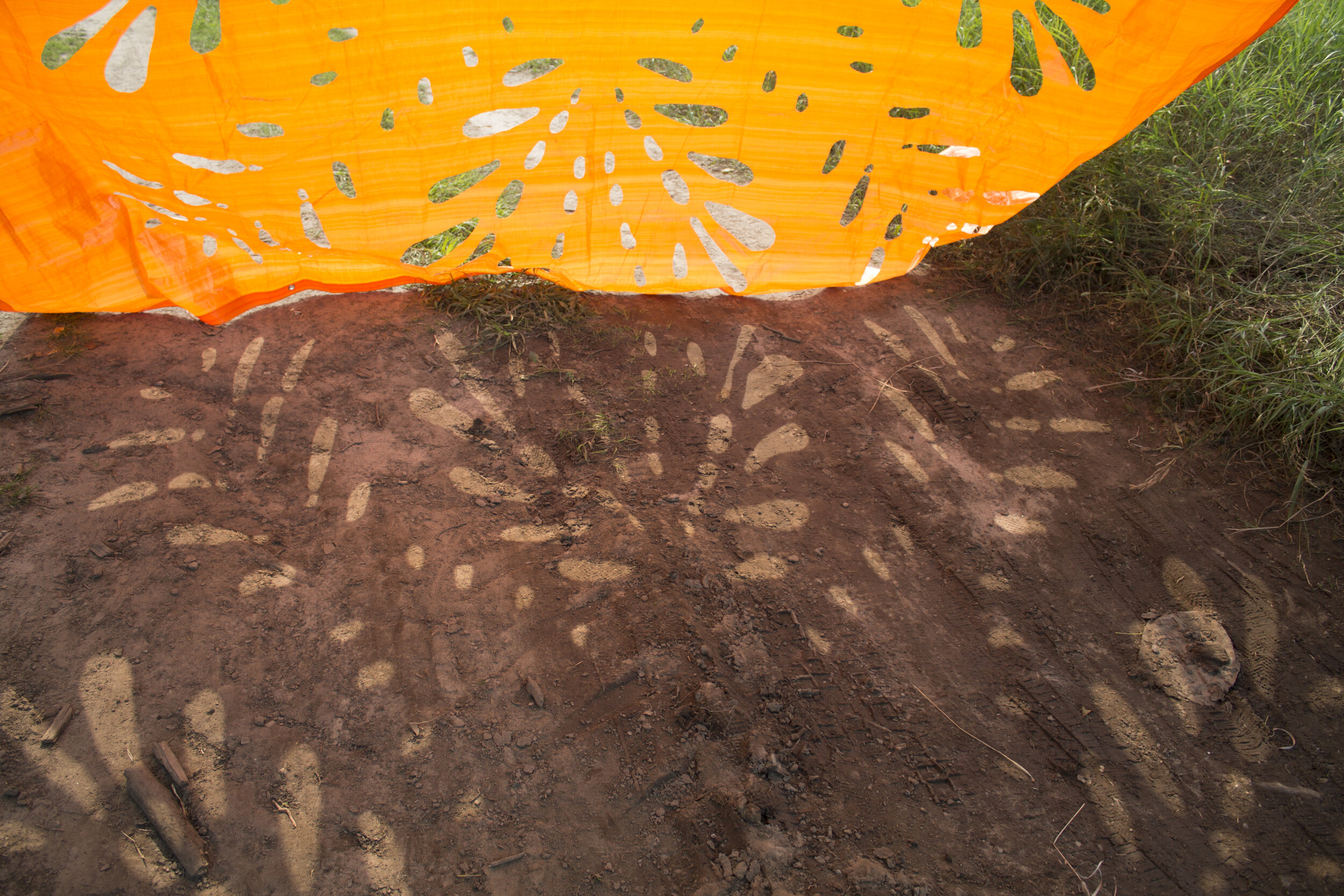
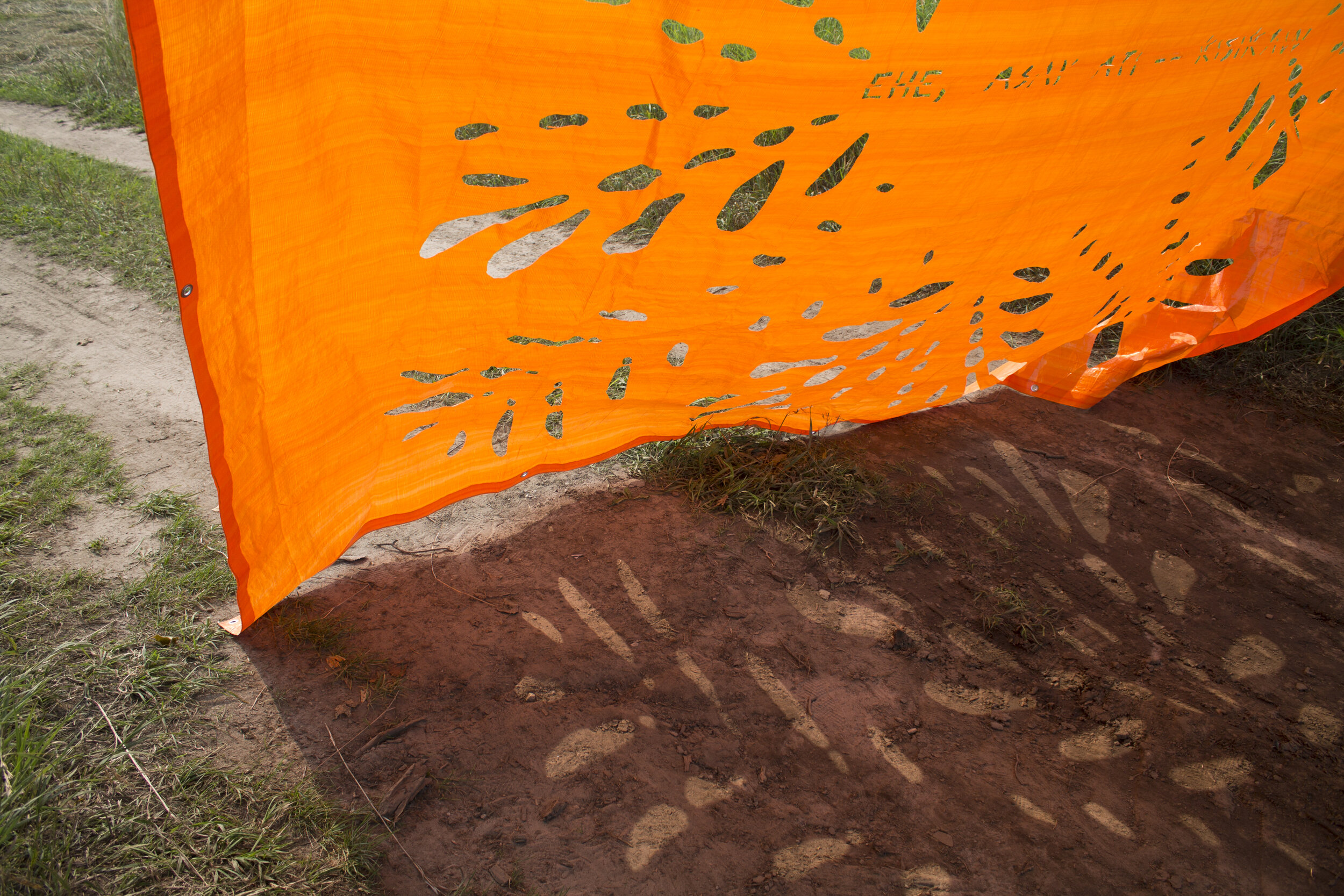

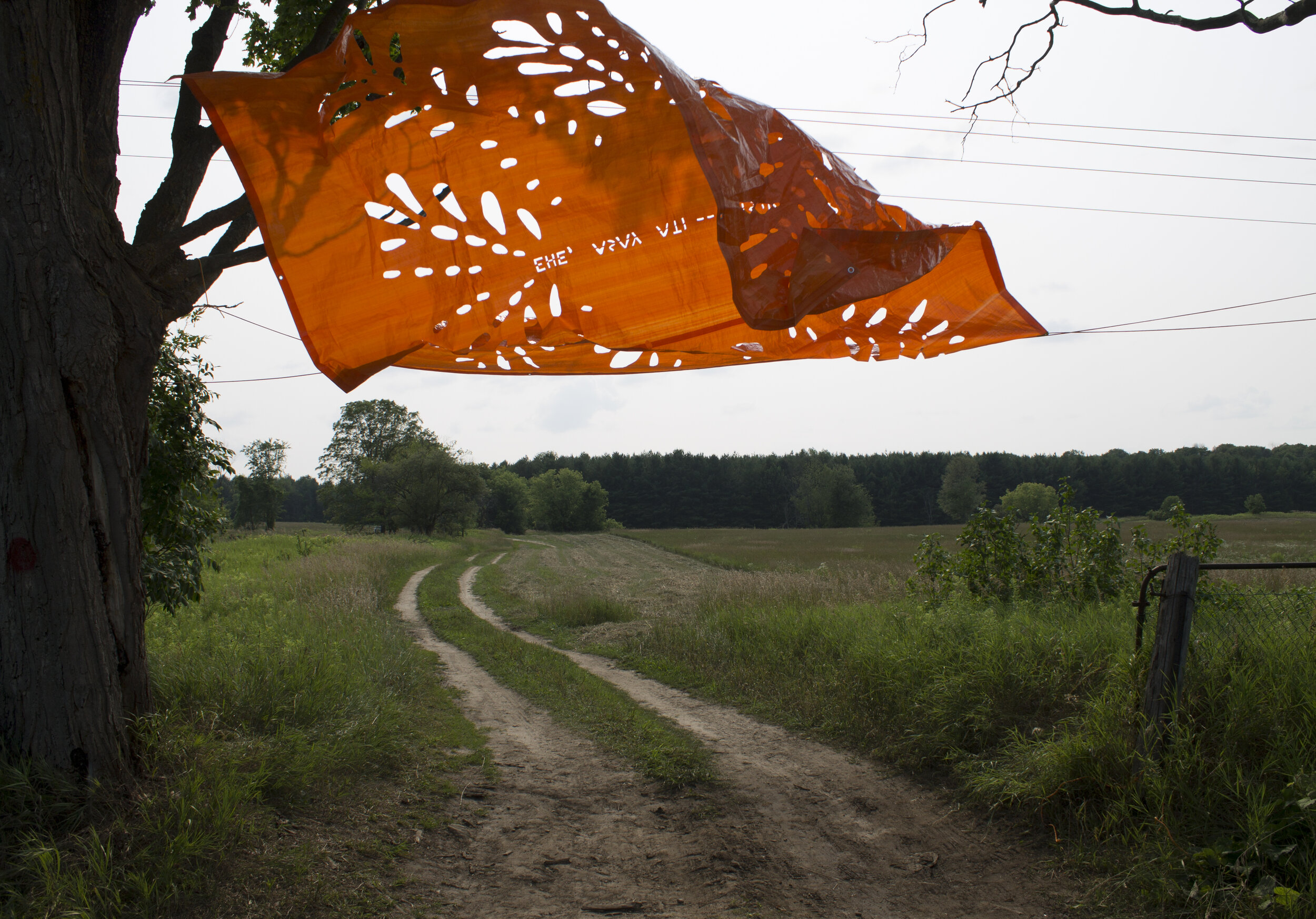


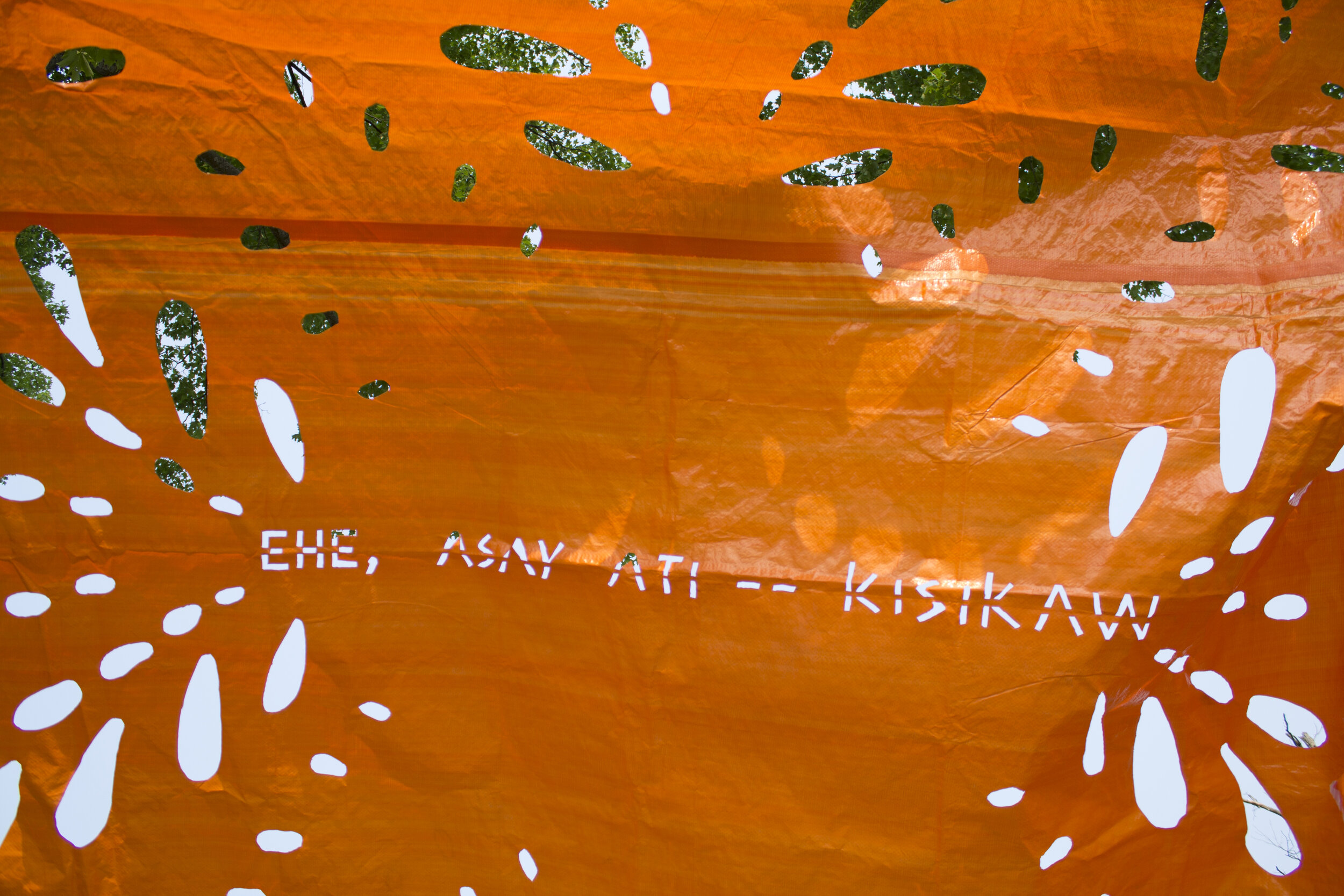

Tell us about this work.
In this work, text in ililimowin (L-dialect Cree) and the patterns of birch bark biting are cut into two 10’x12’ tarpaulins to attempt to describe entangled concerns with climate disaster, Indigenous cultural knowledge loss/erasure and the impact of COVID-19 on my family. I wanted to find a way to talk about loss and hope in a manner that felt cathartic and honest to the moment, and to counter the climate doom that I have been seeing an increasing amount of. A common narrative that has emerged lately is that climate collapse in inevitable, that we are doomed, and I hear this the most often from settlers and those who have the most access to power. I do not hear this from our own communities, where the impacts of climate change are being felt right now, but where there is no room for giving up. There is an immediacy of the love we have for our communities, our homelands and relations that demands an ethic of hope- perhaps it is cheesy, but I believe we need it.
This project is a continuation of a body of my work I generally refer to as my birch bark tarps. The birch bark biting designs are made in the tarps by folding them like I would the thin sheets of birch bark when making bitings, and cutting the pattern into them with an x-acto knife. Utilizing tarpaulin in this way came from my interest in investigating tarpaulin as a mode of transferring knowledge visually in a world without birch bark (an increasing possibility with die-offs of birch trees due to climate change), and as a way to explain my concerns about how climate change (and its constant bedfellow, colonialism) are destroying the ability for Indigenous peoples to communicate and transfer knowledge between generations; whether through the devastation and degradation of our territories or through targeted attacks on our health. During the COVID-19 pandemic, we have seen this express itself through the disproportionate impact on BIPOC communities, and a wave of loss of elders from Indigenous communities.
This work began as a way to remember my mooshum (grandfather) who passed away from COVID-19 in October of 2020, a message of light to myself and others struggling through the pandemic and beyond. It involves the repetition of a question and answer that has lived in other iterations of my work:
The first tarp reads, asay na petapan? Or, is the dawn coming? The second tarp reads, ehe, asay ati-kisikaw or, yes, the day is here.
The question and answer is a phrase my mooshum and I came across while I was learning Cree and reviewing what I had learned with him; we both liked the poetics of the phrase, and would often repeat it to each other during difficult times. The tarps were installed in a field between two maple trees with the assistance of my mother, we moored the top corners of each of the tarps and let the wind take them, making them dance.
At the heart of this project was a desire to offer a small gesture to pass something forward and backwards; an encouragement to survive, an affirmation to hold on. I am wary of silver linings and relentless optimism, this is not the same as hope. I think this is what we will need for the years ahead as we face what feels insurmountable in climate change and collapse.
